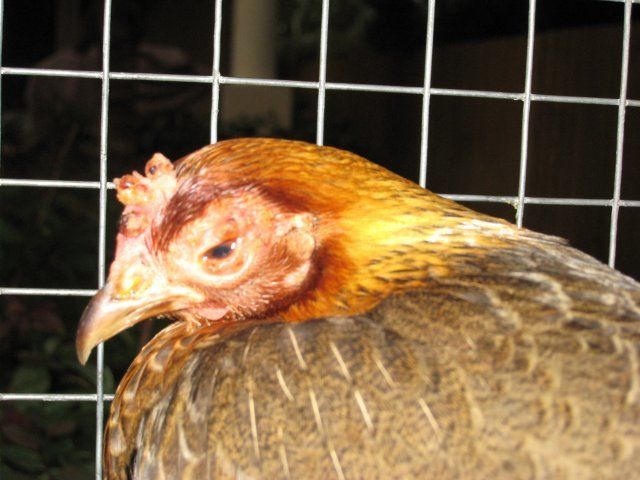- Aug 31, 2008
- 9
- 0
- 7
Hello, My daughters O E bantam has been sick for a few weeks but seems to be getting worse by the hour. She started with sneezing w/ mucus bubbles. Not eating. Very lathargic. Last week eyes had discharge and now she keeps them shut most of the time. Bumps just appeared a few days ago and comb is scabby and sort of deformed. Her sister's comb is much bigger and bright. Flock history: Had 2 silkies and two OE Bantams until I rescued 2 more silkies and a very young Sebright from deplorable conditions (about 2 months ago) The Sebright was sneezing, weezing with bubbles and eye discharge from begining. When the bantam got sick I started treating all with Duramycin-10 in drinking water last Saturday. Changing everyday but very unsure of mixing dose in water. I have been forcing mixture in bantam with syringe in beak. Scabs on comb could be from pecking as she has been picked on by others. Looks like pox but no others showing signs. They all roost together and roam yard during day. Sebright seems to be getting better-no discharge from eyes but sneezing some-not nearly as much. No loss of appetite for her. I live in city-no close farms supply nor vets around to treat chickens. Sorry for long post-please advise. Thank you!
 g][/img]
g][/img]

Pic doesn't show all bumps around eyes to clearly but there are a lot. Also eyeballs seem to bulge.

Pic doesn't show all bumps around eyes to clearly but there are a lot. Also eyeballs seem to bulge.

